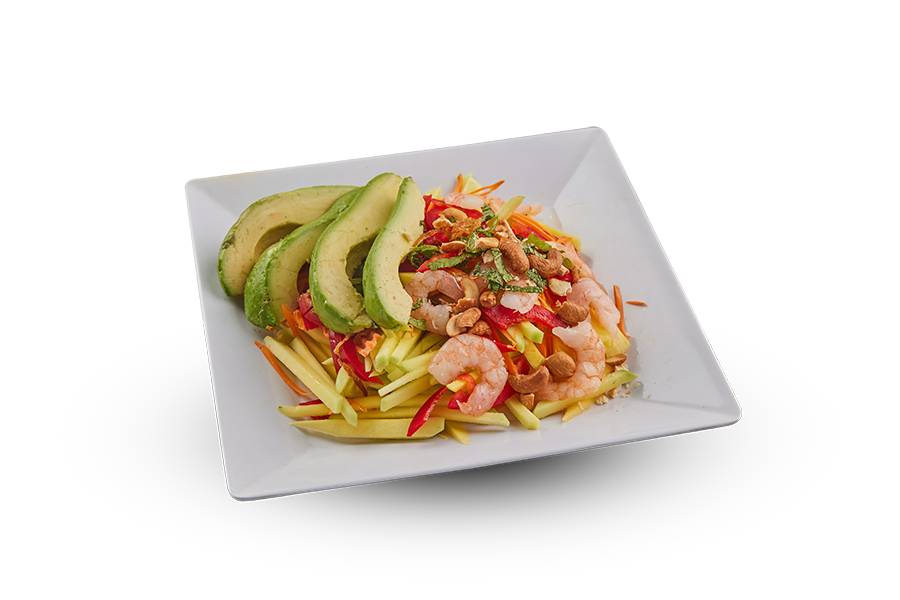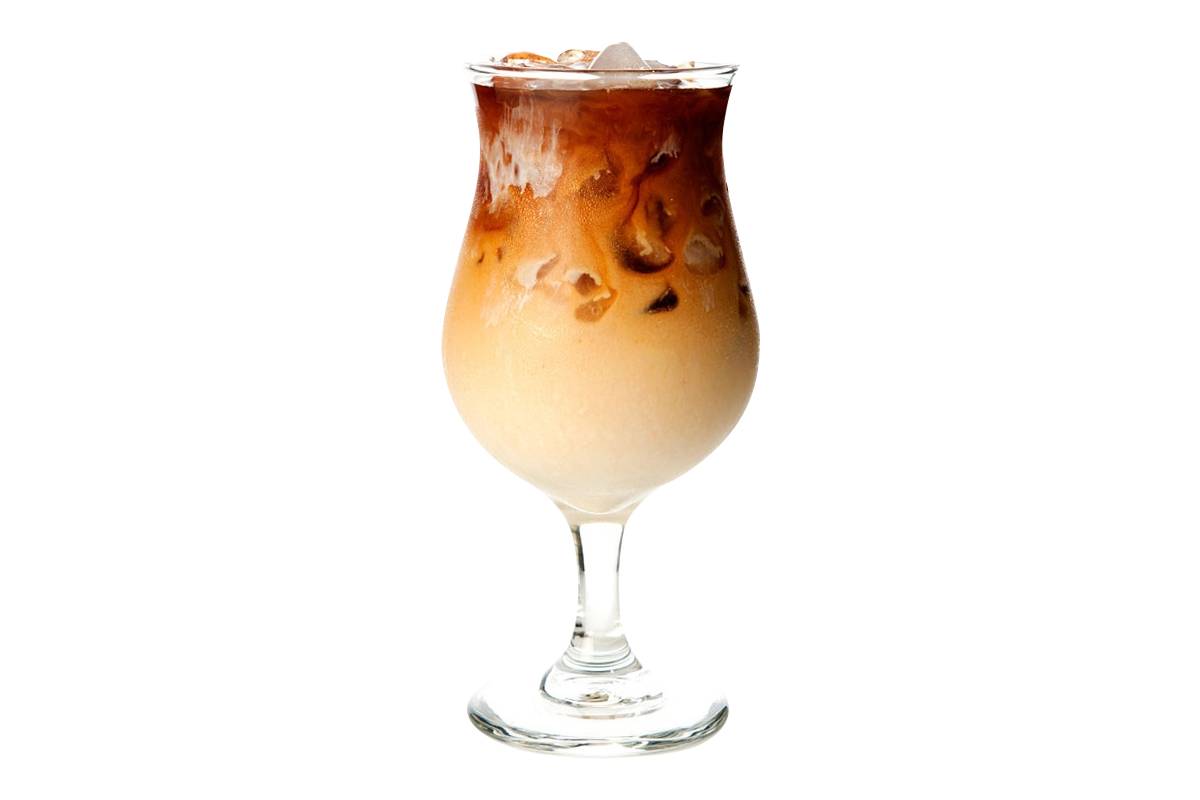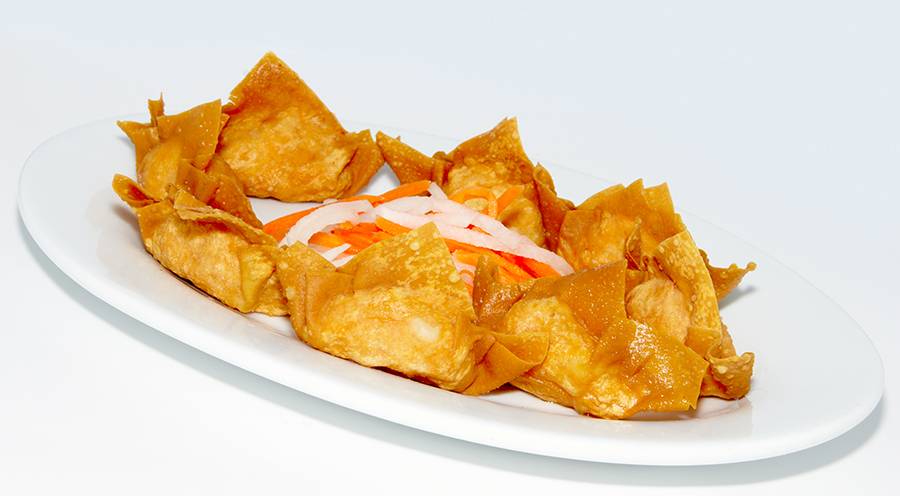Chè
Perhaps the most quintessential Vietnamese dessert is chè, a term that encompasses a wide range of sweet soups, puddings, and beverages. Typically served either hot or cold, chè can be made from mung beans, black-eyed peas, kidney beans, tapioca, jelly (often coconut jelly), and fruit and is sweetened with sugar and coconut milk. Each region in Vietnam has variations of chè, making it a diverse and versatile dessert option.
- Chè Bà Ba: A popular variety in the South of Vietnam, this dessert features taro, cassava, and sweet potato in a rich and creamy coconut milk base, often topped with a thick layer of coconut cream.
- Chè Trôi Nước: These are glutinous rice balls stuffed with mung bean paste, cooked in a sweet ginger syrup, and sprinkled with sesame seeds. It's trendy during Vietnamese festivals and celebrations.
Bánh
The term bánh refers to a wide range of Vietnamese cakes, pastries, and bread, which can be sweet or savoury. Desserts often incorporate subtly sweet and satisfyingly complex textures and flavours.
- Bánh Chuối Nướng is a Vietnamese banana cake or bread pudding made with ripe bananas, coconut milk, and tapioca pearls. It is often scented with a hint of pandan, giving it a vibrant green colour. The cake is baked to perfection and offers a delightful caramelized top layer that contrasts beautifully with the soft, pudding-like texture underneath.
- Bánh Bò Thốt Nốt: Made from rice flour, water, sugar, and yeast, this cake is unique for its spongy texture and the use of thốt nốt (sugar palm), which imparts a distinct sweetness. This cake is airy and light, often enjoyed as a snack rather than an end-of-meal dessert.
Bánh Tét and Bánh Chưng
These traditional cakes are more commonly associated with the Lunar New Year in Vietnam but are enjoyed throughout the year as a treat in many Vietnamese communities across Canada. Both are made from glutinous rice, mung beans, pork, and other ingredients, tightly wrapped in banana leaves and boiled for hours.
- While not desserts in the traditional Western sense, these cakes represent a sweet cultural treat due to their rich historical significance and ceremonial value.
Fruit Platters
Fresh fruit platters are a common way to end a meal in Vietnamese culture. They feature tropical fruits such as dragon fruit, lychee, longan, and mango. In Vietnam, fruits are often enjoyed in their natural state, but in Canada, they might be served with a chilli salt mix that enhances their sweetness and adds a layer of complexity.
Kem Xôi
It is a delightful dessert that combines ice cream's creamy texture with glutinous rice's sticky sweetness. Kem xôi is ice cream topped with sticky rice mixed with coconut milk. This dessert often includes toppings like crushed peanuts and toasted sesame seeds, providing a nutty flavour that complements the sweet and creamy base.
Yogurt Coffee (Sữa Chua Cà Phê)
This unique dessert combines Vietnamese coffee with yogurt, creating a dessert that is both a beverage and a creamy treat. The coffee's strong, slightly bitter flavour pairs excellently with the sweet, tangy yogurt, creating an unexpectedly harmonious contrast.
Flan (Bánh Flan)
A creamy, caramel-topped custard that reflects the French influence on Vietnamese cuisine, bánh flan is a beloved dessert in Vietnam and among the Vietnamese diaspora. It's silky texture and rich vanilla and caramel flavours make it a perfect dessert for those who prefer something less sweet but intensely flavorful.
Exploring These Desserts in Canada
Many of these desserts are available in Vietnamese restaurants and bakeries across Canada, particularly in cities with large Vietnamese communities like Toronto, Vancouver, and Montreal. Exploring these desserts offers a window into the subtle complexities of Vietnamese cuisine and provides an educational and delicious experience.
Moreover, preparing these desserts often involves techniques and ingredients integral to Vietnamese culinary traditions, offering a learning opportunity for those interested in culinary arts. For instance, understanding the balance of ingredients in chè or wrapping bánh tét can add depth to one's cooking skills.
To Sum Up
Vietnamese desserts are a delightful exploration of flavours, textures, and culinary techniques. They are not just treats for the palate but also a bridge to understanding the rich cultural tapestry of Vietnam. Whether dining in a Vietnamese restaurant in Canada or trying to recreate these desserts at home, each bite offers a story and a connection to Vietnamese culinary heritage.
Here are some delicious food and drinks to try when ordering from PHO restaurants in Toronto:






















